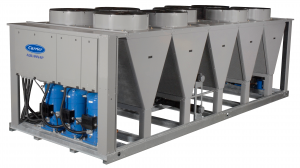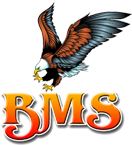In most large buildings, a large amount of industrial smoke, chemical fumes, salt, and/or heavy dust is generated due to machinery and equipment use. These airborne impurities can be carried into the equipment and absorbed by the recirculating water to form a corrosive solution. A cooling tower system is used to cool machinery and products. Some of the facilities that require a cooling tower system include manufacturing plants, natural gas processing, chemical processing, refineries, steel mills, food processing, die casting, injection molding, etc.

What is a Cooling Tower System?
A cooling tower system is a specialized heat exchanger that gets rid of latent heat from water through evaporative cooling. This system uses air from the surroundings to lower water temperatures. The air can either be natural or forced using a fan. The rate by which a cooling tower system cools water depends on the rate of water evaporation.
There are different types of cooling tower systems:
- Counterflow
- Crossflow
- Forced draft
- Induced draft
- Field-erected
- Factory assembled
There are factors to consider when selecting a cooling tower system, such as noise level, cooling tower size, efficiency, tower capacity, and tendency toward corrosion.
How Does a Cooling Tower System Work?
Cooling towers are sized and designed based on the cooling load. Relative humidity levels and building size will help you invest in the right cooling tower. All types of cooling tower systems use a similar principle: evaporative cooling. A water cooling tower receives condenser water from chillers. The main objective of pumps in the cooling tower system is to circulate water from the tower to the condenser and back.
The hot water is sprayed through a nozzle onto the fill, which can be made of wood slats, metal fins, and plastic. The surfaces of the fill can take the shape of corrugated sheets, honeycomb, and flat sheets. As the hot water flows through these materials, force-draft or natural-draft air comes into contact with the hot water and changes to a gas state as a result of evaporation.
The cold water goes through a filter to eradicate debris and other solid materials. It’s then collected into the lower sump and circulated back to the condenser. In most industries, a drain plays a significant role in removing water minerals from the cooling tower system. Note that a cooling tower should be located in a well-ventilated section of the building.
Cooling Tower Parts and Functions
These parts can either be electrical, mechanical, or structural. Electrical parts comprise motors and their respective controls. Mechanical parts are the rotating equipment, including speed reducers, drive shafts, and fans. Finally, structural components include louvers, fan desk, basin, and casing. Below are the main parts of a cooling tower system:
- Distribution System
The distribution system varies from one cooling tower system to another. Air-to-water flow is a key aspect that will determine the type of distribution system you need. For instance, a cross-flow cooling tower requires a gravity-flow distribution system. On the other hand, a counter-flow cooling tower requires a pressurized water spray distribution system.
- Casing
The main objective of the casing is to provide housing to the tower frame. In addition, it transmits the load to the tower and holds water within the cooling system.
- Fill
Fill can also be termed as surface or wet deck. The main aim of the fill is to maximize the surface area of the cooling tower, thus optimizing the contact surface between water and air. Also, it optimizes the contact time and provides minimum restrictions to airflow.
- Louvers
Louvers serve as the block for debris, water splash-out, and noise. They are the most significant part of a cross-flow cooling tower system. They are situated above the cold water basin.
- Fan and Motor
The main work of fans is to force air in and out of the system. Big, heavy fans require a gearbox to increase torque. This is essential because it eliminates the need to invest in a strong structure and heavy motors. In some systems, you can opt for pulley and belt assemblies.
- Valves
The main aim of valves is to control the water level inside the system. Different types of valves used in cooling tower systems are make-up regulator valves, flow-control valves, and isolation valves.
- Fan Stack
Other names for a fan stack can be either a fan cover or a fan cylinder. The main aim of the fan stack is to improve the efficiency of the fan. The fan deck acts as a support to your system’s fan cylinder.
- Drift Eliminators
The drift eliminators create sudden changes in the path of the air stream, thus preventing water droplets from vanishing.
- Tower structural frame
The main obligation of the tower structural frame is to transmit all the leads to the system’s foundation. In addition, it provides sufficient support to the whole tower cooling system. Other vital components of the cooling tower system are the collection basin, drive shaft, speed reducer, and distribution basin.
Cooling Tower Maintenance
Cooling tower maintenance is a vital practice that will improve the functioning ability of your system. In addition, a well-maintained cooling tower will protect the health and safety of workers in the building. Therefore, you should consider hiring professional cooling tower repair services. Experts will inspect your system to determine whether the housing or moving parts need cleaning. Cooling tower cleaning services will significantly increase your system’s efficiency, thus enhancing its longevity. Cleaning a tower requires professionalism; therefore, avoid the do-it-yourself route. Other services that professionals will provide include water treatment, water pump inspection, and scale deposit removal. Regular cooling tower system inspection can be cost-effective because your system won’t be prone to severe damage.
Mechanical Contractor in Washington DC, Virginia, and Maryland
If you are looking for commercial HVAC maintenance and want a reliable company that focuses specifically on commercial systems, give us a call at 703-649-2977 or request service here.
